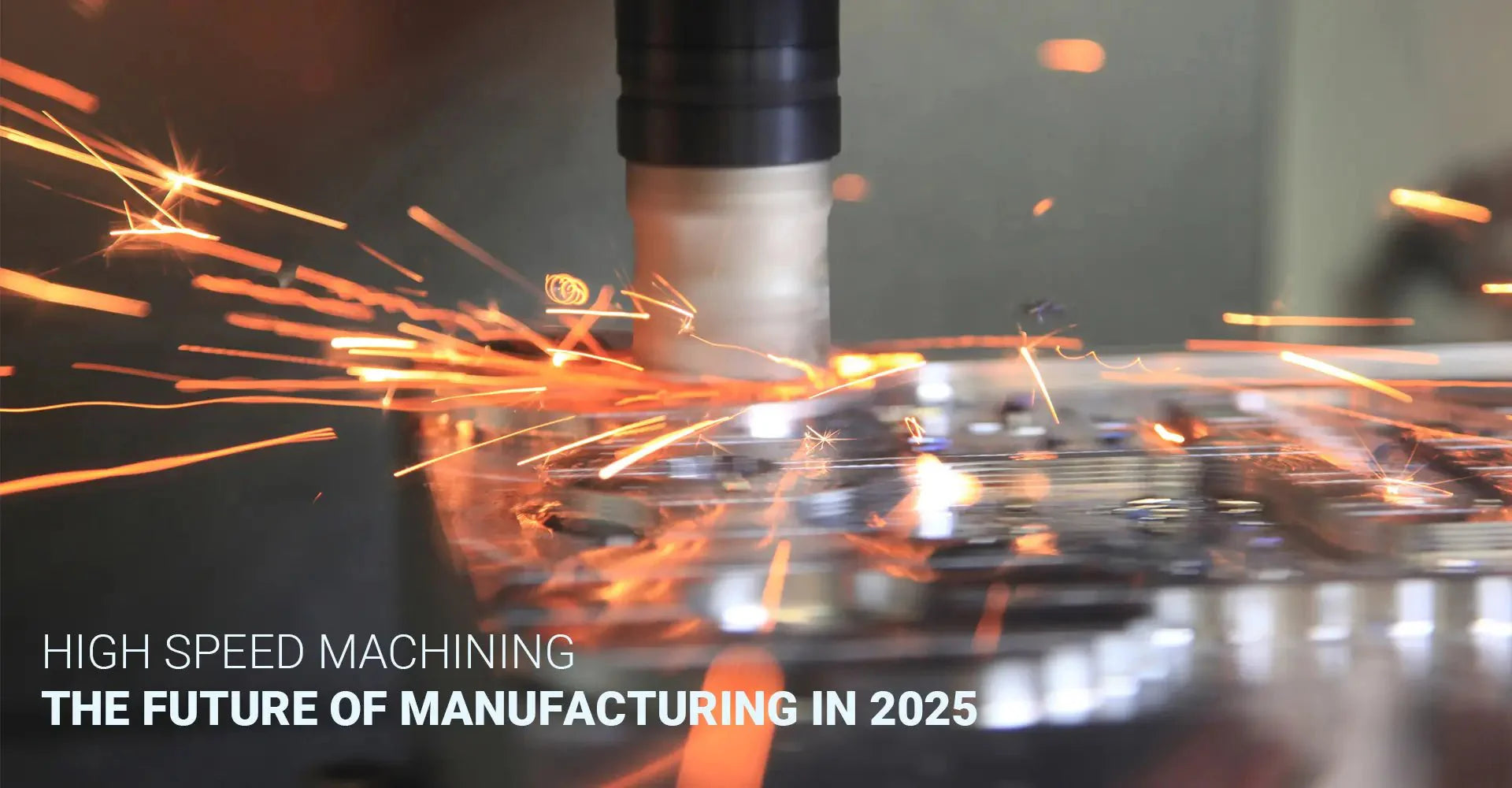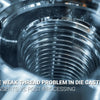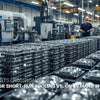What Makes High-Speed Machining the Future of Manufacturing in 2025?

What Makes High-Speed Machining the Future of Manufacturing in 2025?

In today's rapidly evolving manufacturing landscape, High-Speed Machining (HSM) stands as a cornerstone of modern production technology. This revolutionary approach to machining has transformed how industries achieve precision, efficiency, and quality in their manufacturing processes.
With the global precision machining market reaching a staggering $107 billion in 2023 and projected to grow at a CAGR of 7.8% through 2030, HSM is reshaping the future of manufacturing. This advanced technology enables manufacturers to achieve unprecedented levels of productivity while maintaining superior quality standards.
As we delve into the world of High-Speed Machining, we'll explore its transformative impact across various industries, examine the latest technological advancements, and understand why it's becoming increasingly crucial for modern manufacturing operations.
[Table of Contents]
- What Are the Game-Changing Benefits of High-Speed Machining?
- How Does Advanced HSM Technology Transform Modern Manufacturing?
- Which Industries Are Leading the High-Speed Machining Revolution?
- What Are the Critical Challenges and Solutions in High-Speed Machining?
What Are the Game-Changing Benefits of High-Speed Machining?
The evolution from traditional to high-speed machining represents a quantum leap in manufacturing capabilities. High-speed machining operates at spindle speeds exceeding 10,000 RPM, marking a significant advancement over conventional machining methods.
In 2023, the precision machining market hit $107 billion, demonstrating the industry's robust growth and increasing adoption of HSM technology. This remarkable growth is driven by HSM's ability to deliver faster production cycles while maintaining exceptional quality standards.
The impact of HSM extends beyond mere speed improvements. Manufacturers report significant reductions in tool wear, enhanced surface finish quality, and substantial increases in overall productivity. These benefits directly translate to improved bottom lines and competitive advantages in the global market.
How Does Advanced HSM Technology Transform Modern Manufacturing?
Modern HSM technology represents a sophisticated integration of multiple advanced systems working in harmony. At its core, HSM relies on cutting-edge tooling materials specifically engineered to withstand high temperatures and maintain rigidity under extreme conditions.
Trochoidal milling, a key innovation in HSM, has revolutionized how manufacturers approach complex cutting operations. This strategy maintains constant chip thickness while minimizing tool wear, leading to more efficient and cost-effective production processes.

The implementation of adaptive control systems marks another significant advancement in HSM technology. These intelligent systems continuously monitor and adjust cutting parameters in real-time, ensuring optimal performance while preventing tool damage and maintaining precise specifications.
Which Industries Are Leading the High-Speed Machining Revolution?
The aerospace industry leads the charge in HSM adoption, requiring ultra-precise components manufactured to exacting tolerances. Following closely is the automotive sector, where HSM enables the production of complex engine components and structural elements with unprecedented efficiency.
The electronics manufacturing industry leverages HSM for creating intricate components essential for modern devices. The medical device sector also heavily relies on HSM for producing precise surgical instruments and implants.
| Industry | Applications | Key Characteristics | Benefits |
|---|---|---|---|
| Aerospace | Manufacturing of aircraft components | High precision and tolerance requirements | Enhanced safety, reduced weight, improved fuel efficiency |
| Automotive | Mass production of engine parts | High-speed positioning machines, versatile spindle speeds | Reduced cycle times, increased production efficiency |
| Electronics | Production of intricate electronic components | Focus on miniaturization and superior finishes | Improved product quality, faster time-to-market |
| Medical Devices | Creation of surgical instruments and implants | Complex geometries with high surface finishes | Enhanced precision for better patient outcomes |
| Energy | Manufacturing turbine blades | Ability to machine hard materials with precision | Increased efficiency and performance in energy systems |
| Defense | Production of custom parts | High-quality standards for critical applications | Reliability and durability in demanding environments |
Each of these sectors continues to push the boundaries of what's possible with HSM technology, driving innovation and establishing new standards for manufacturing excellence.
What Are the Critical Challenges and Solutions in High-Speed Machining?
Success in HSM implementation requires careful attention to several critical factors. Tool selection stands as a primary consideration, with manufacturers needing to choose optimal tools based on specific material properties and production requirements.
Heat generation management remains a crucial challenge in HSM operations. Advanced cooling strategies and thermal management systems have become essential components of modern HSM setups.
Finding the perfect balance between speed and precision continues to challenge manufacturers. However, advanced monitoring systems and precise control mechanisms help maintain this delicate equilibrium.
Conclusion: The Future of High-Speed Machining
The future of High-Speed Machining looks incredibly promising, with continued technological advancements driving further improvements in efficiency and capability. As automation and AI technologies become more integrated into HSM systems, we can expect to see even greater achievements in manufacturing precision and productivity.
The sustained growth of the HSM market, with its projected 7.8% CAGR through 2030, indicates strong confidence in this technology's future. As industries continue to evolve and demand higher levels of precision and efficiency, HSM will undoubtedly play an increasingly vital role in shaping the future of manufacturing.
[External Links Recommendation]
-
Posted in
CNC machining, high speed machining





